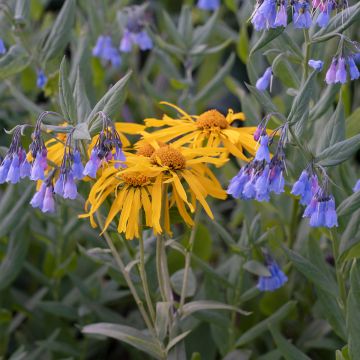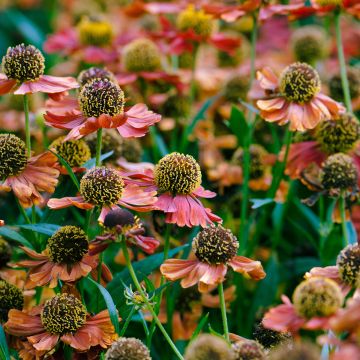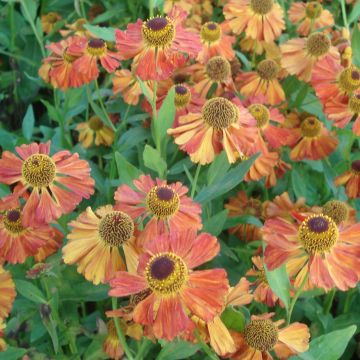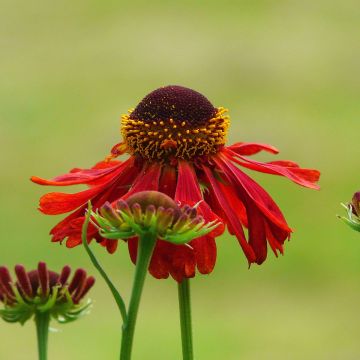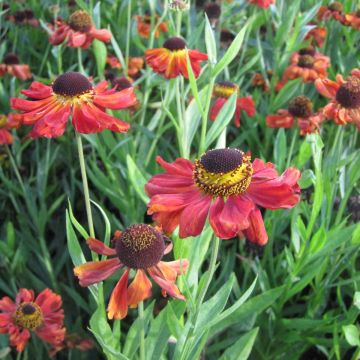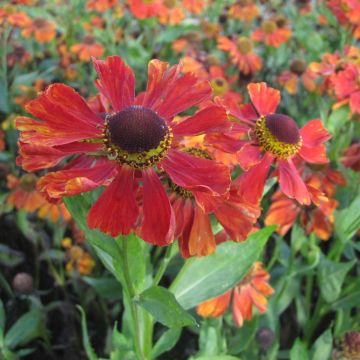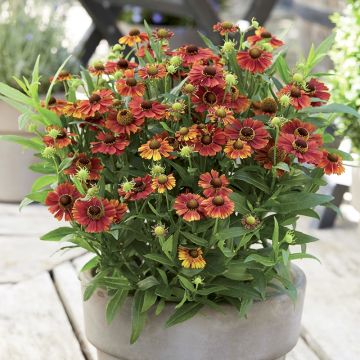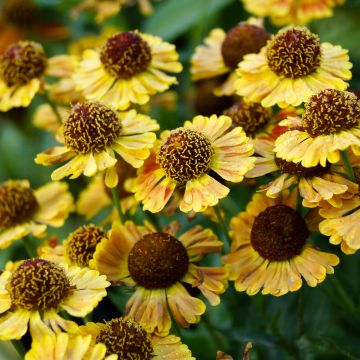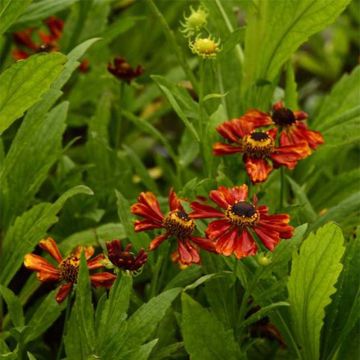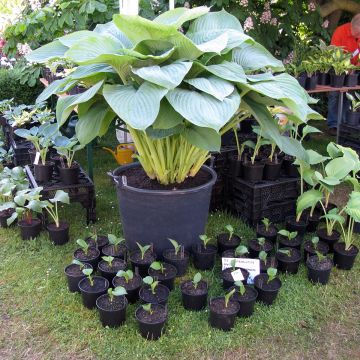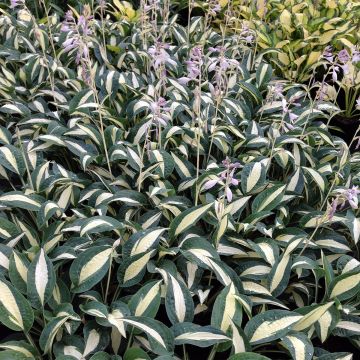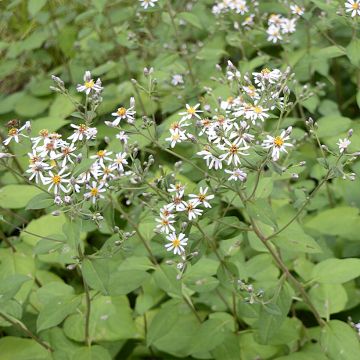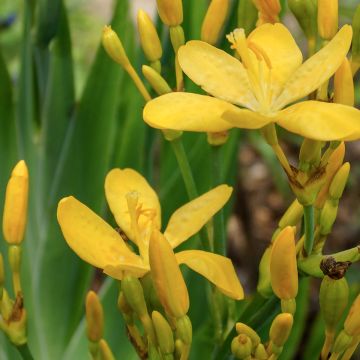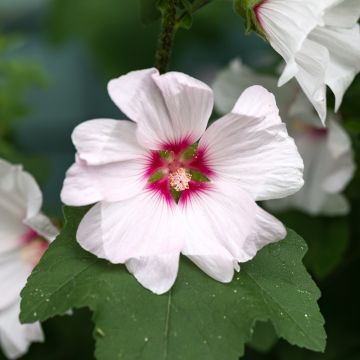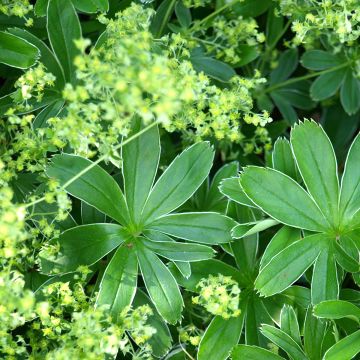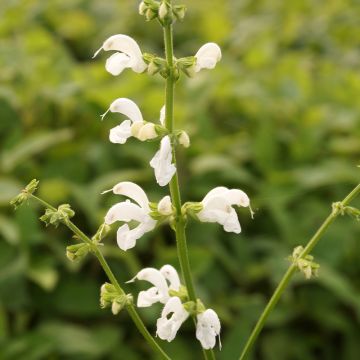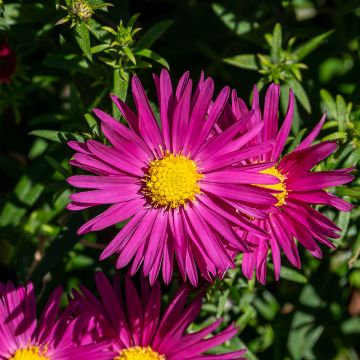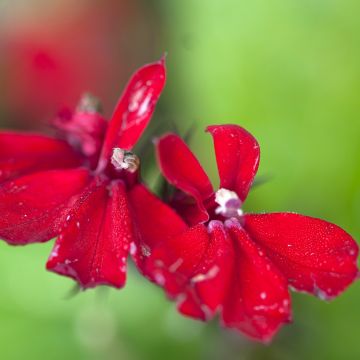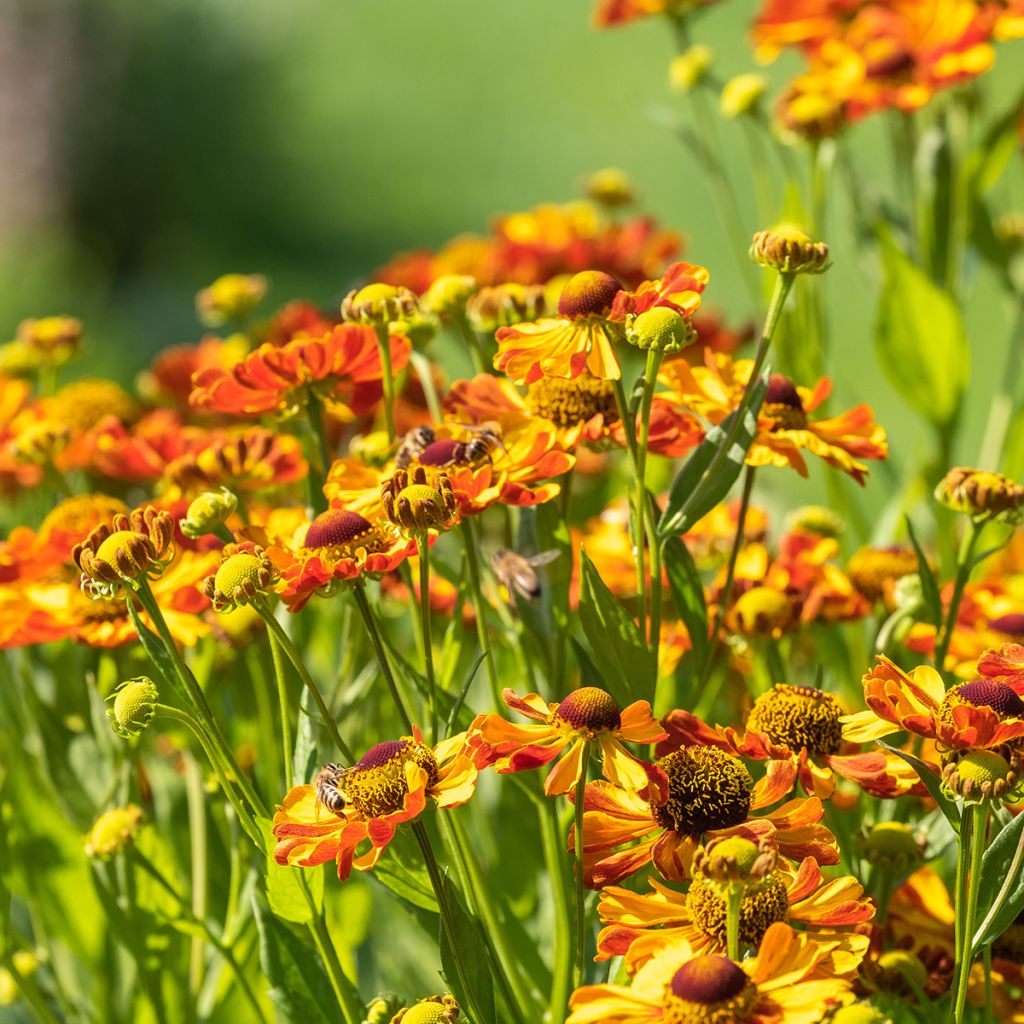

Helenium Rauchtopas
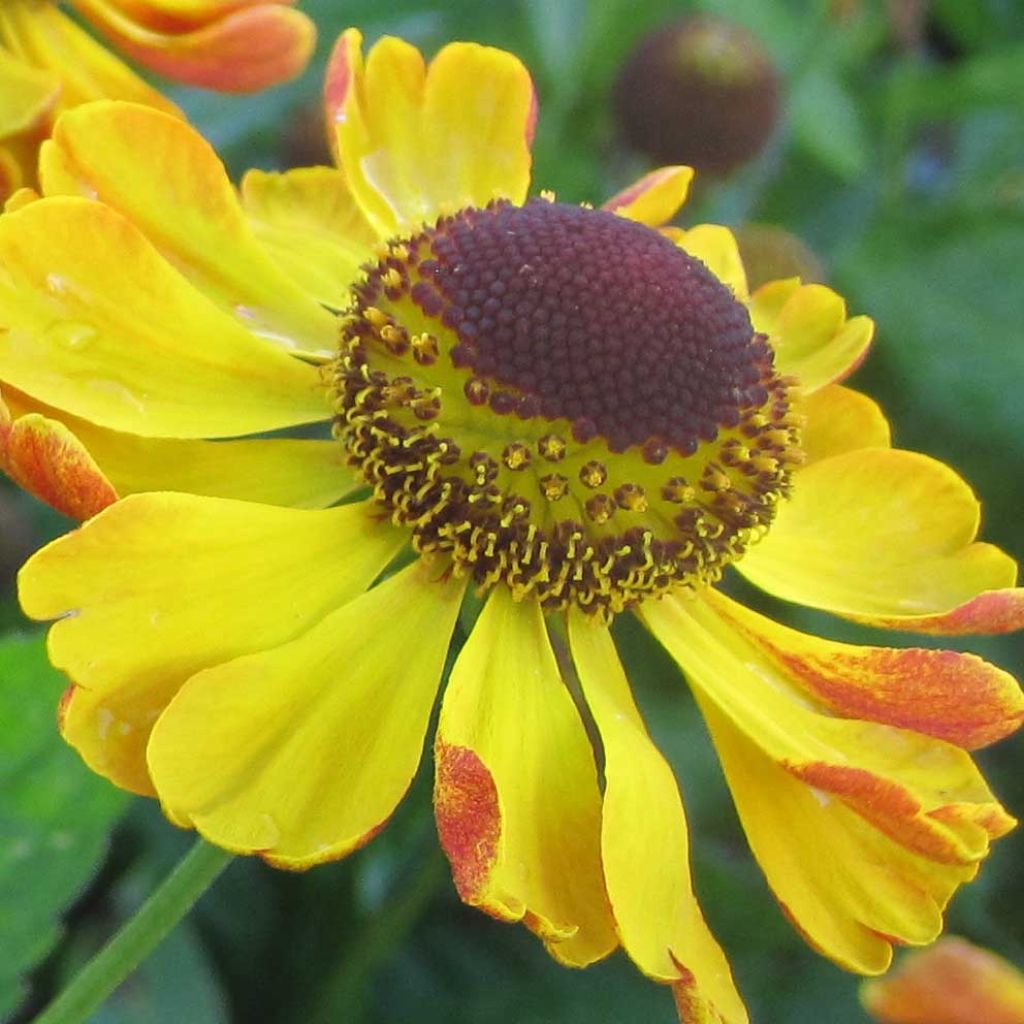

Helenium Rauchtopas
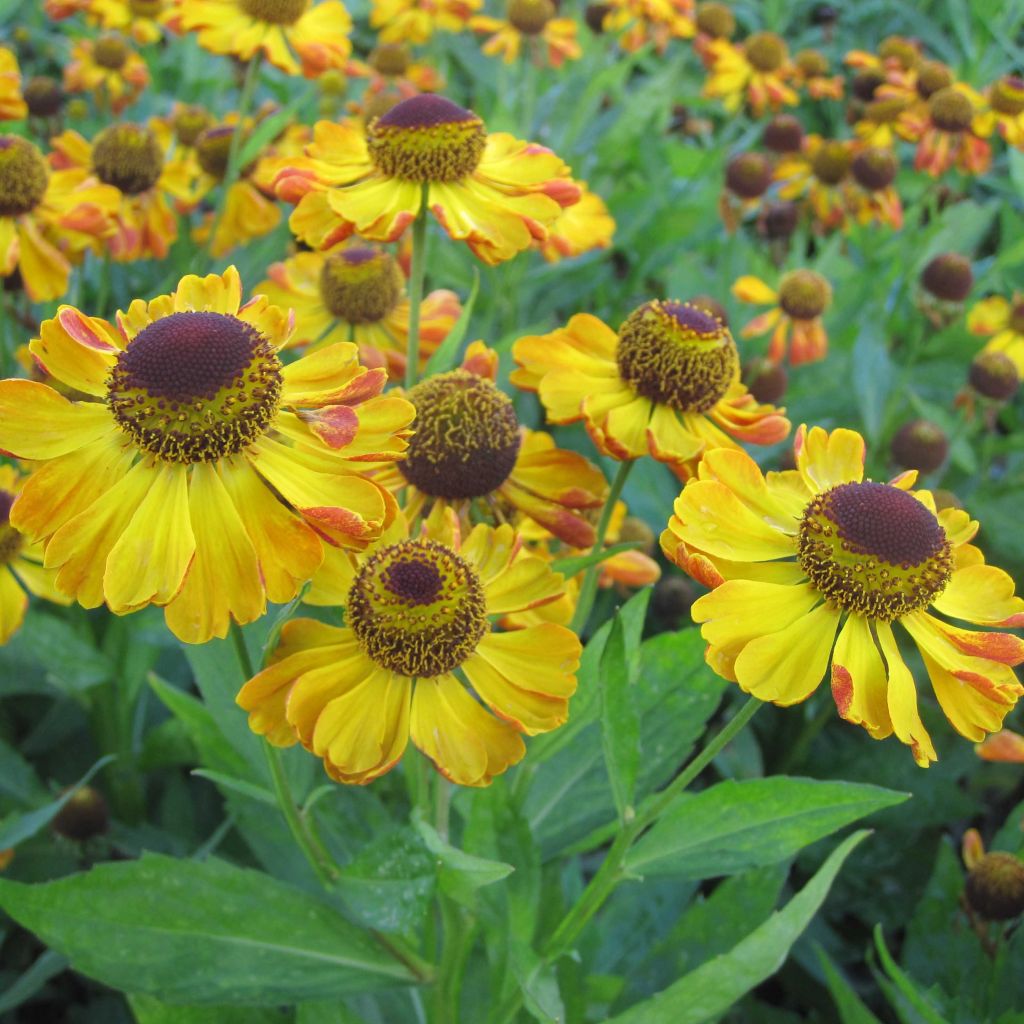

Helenium Rauchtopas
Helenium Rauchtopas
Helenium Rauchtopas
Sneezeweed, Helen's flower, Dogtooth daisy
No text to translate.
Laurence, 30/01/2025
This item cannot be shipped to the selected country
Delivery charge from €5.90
More information
Schedule delivery date,
and select date in basket
This plant carries a 12 months recovery warranty
More information
We guarantee the quality of our plants for a full growing cycle, and will replace at our expense any plant that fails to recover under normal climatic and planting conditions.
From €5.90 for pickup delivery and €6.90 for home delivery
Express home delivery from €8.90.
Does this plant fit my garden?
Set up your Plantfit profile →
Description
Helenium 'Rauchtopas' is a particularly original and well-contrasted variety of sneezeweed. Its daisy-shaped flowers display delicately curled florets, with a soft apricot orange on top and a visible brick-red on the underside of the corolla. The head's centre is adorned with a prominent cone, surrounded by yellow stamens. It is a large, colourful perennial that blooms from July to September on sturdy stems, offering wonderful bouquets. A hardy plant, it is easy to grow in full sun or partial shade, in moist and well-drained soil.
Heleniums are perennial plants native to North America, where they are typically found on the edges of marshes. The 'Rauchtopas' cultivar boasts an unusual colour and vigorous growth. It has an upright habit with stems reaching up to 1.2m (4ft) in height. The leaves are a vibrant green, lanceolate in shape with smooth margins, and are arranged alternately along the stems. From July to September, a myriad of flowers appear at the top of the stems. The heads resemble 5 to 6cm (2in) diameter daisies. In the centre, the cone is brown, gradually giving way to yellow stamens that form a highly visible concentric circle. At the periphery, the cut and curled florets fade while taking on irregular brown, copper, or red splashes, all in perfect harmony. The warm tones of this flowering herald the beginning of autumn flowers.
The 'Rauchtopas' Helenium is an elegant, hardy plant that is never plagued by diseases. It thrives in ordinary but well-drained soil and tolerates semi-shaded positions. Easy to grow, it flourishes in embankments, flower beds, and containers. Despite all these qualities, sneezeweeds remain rare in gardens. Perhaps it is because their warm tones prematurely announce autumn, yet they are the perfect complement to asters. 'Rauchtopas', when paired with Rudbeckias, combines well with autumnal plants such as Gauras or Heucheras, but it can also be associated with a deciduous spindle tree whose foliage ignites at the first cold. In a different setting, the fuzzy foliage of Stachys or salvias greatly enhances the warm hue of this flowering.
Report an error about the product description
Helenium Rauchtopas in pictures
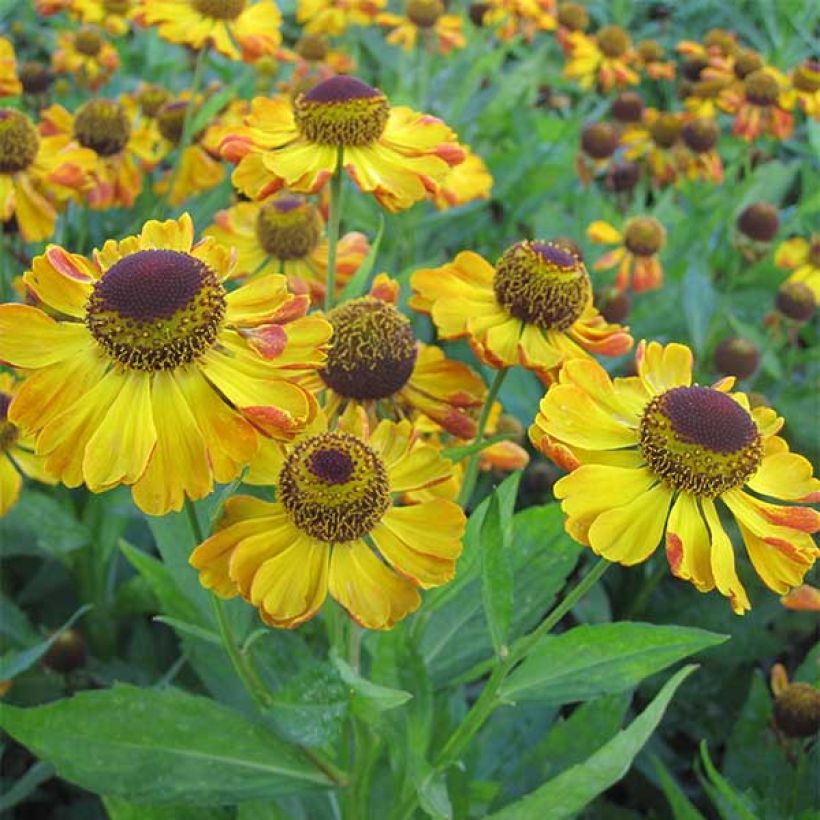

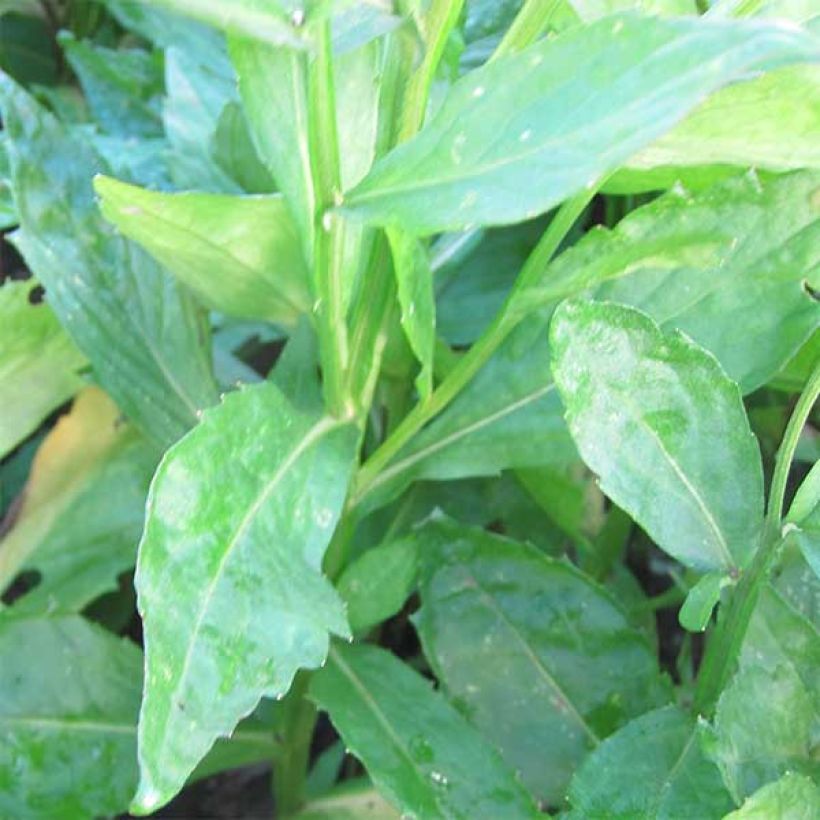

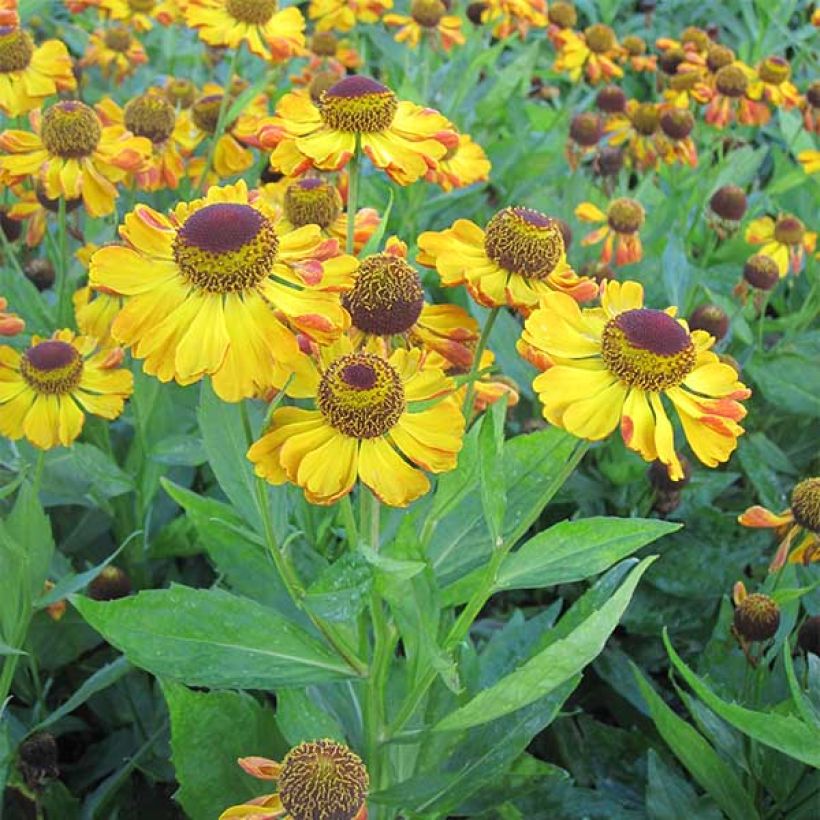

Flowering
Foliage
Plant habit
Botanical data
Helenium
Rauchtopas
Asteraceae
Sneezeweed, Helen's flower, Dogtooth daisy
Cultivar or hybrid
Other Helenium
Planting and care
Plant the 'Rauchtopas' Helenium in ordinary soil, provided it is well-drained, by adding planting soil and/or well-decomposed compost. Choose a sunny exposure for it. Water regularly after planting, and once established, only water in case of prolonged drought. This fairly tall variety may sometimes need staking. Cut back the plant once the stems have turned black. Every 2 to 3 years, you can divide the clump in spring or autumn to regenerate the plant and give it renewed vigour.
Planting period
Intended location
Care
-
, onOrder confirmed
Reply from on Promesse de fleurs
Summer flowering perennials
Haven't found what you were looking for?
Hardiness is the lowest winter temperature a plant can endure without suffering serious damage or even dying. However, hardiness is affected by location (a sheltered area, such as a patio), protection (winter cover) and soil type (hardiness is improved by well-drained soil).

Photo Sharing Terms & Conditions
In order to encourage gardeners to interact and share their experiences, Promesse de fleurs offers various media enabling content to be uploaded onto its Site - in particular via the ‘Photo sharing’ module.
The User agrees to refrain from:
- Posting any content that is illegal, prejudicial, insulting, racist, inciteful to hatred, revisionist, contrary to public decency, that infringes on privacy or on the privacy rights of third parties, in particular the publicity rights of persons and goods, intellectual property rights, or the right to privacy.
- Submitting content on behalf of a third party;
- Impersonate the identity of a third party and/or publish any personal information about a third party;
In general, the User undertakes to refrain from any unethical behaviour.
All Content (in particular text, comments, files, images, photos, videos, creative works, etc.), which may be subject to property or intellectual property rights, image or other private rights, shall remain the property of the User, subject to the limited rights granted by the terms of the licence granted by Promesse de fleurs as stated below. Users are at liberty to publish or not to publish such Content on the Site, notably via the ‘Photo Sharing’ facility, and accept that this Content shall be made public and freely accessible, notably on the Internet.
Users further acknowledge, undertake to have ,and guarantee that they hold all necessary rights and permissions to publish such material on the Site, in particular with regard to the legislation in force pertaining to any privacy, property, intellectual property, image, or contractual rights, or rights of any other nature. By publishing such Content on the Site, Users acknowledge accepting full liability as publishers of the Content within the meaning of the law, and grant Promesse de fleurs, free of charge, an inclusive, worldwide licence for the said Content for the entire duration of its publication, including all reproduction, representation, up/downloading, displaying, performing, transmission, and storage rights.
Users also grant permission for their name to be linked to the Content and accept that this link may not always be made available.
By engaging in posting material, Users consent to their Content becoming automatically accessible on the Internet, in particular on other sites and/or blogs and/or web pages of the Promesse de fleurs site, including in particular social pages and the Promesse de fleurs catalogue.
Users may secure the removal of entrusted content free of charge by issuing a simple request via our contact form.
The flowering period indicated on our website applies to countries and regions located in USDA zone 8 (France, the United Kingdom, Ireland, the Netherlands, etc.)
It will vary according to where you live:
- In zones 9 to 10 (Italy, Spain, Greece, etc.), flowering will occur about 2 to 4 weeks earlier.
- In zones 6 to 7 (Germany, Poland, Slovenia, and lower mountainous regions), flowering will be delayed by 2 to 3 weeks.
- In zone 5 (Central Europe, Scandinavia), blooming will be delayed by 3 to 5 weeks.
In temperate climates, pruning of spring-flowering shrubs (forsythia, spireas, etc.) should be done just after flowering.
Pruning of summer-flowering shrubs (Indian Lilac, Perovskia, etc.) can be done in winter or spring.
In cold regions as well as with frost-sensitive plants, avoid pruning too early when severe frosts may still occur.
The planting period indicated on our website applies to countries and regions located in USDA zone 8 (France, United Kingdom, Ireland, Netherlands).
It will vary according to where you live:
- In Mediterranean zones (Marseille, Madrid, Milan, etc.), autumn and winter are the best planting periods.
- In continental zones (Strasbourg, Munich, Vienna, etc.), delay planting by 2 to 3 weeks in spring and bring it forward by 2 to 4 weeks in autumn.
- In mountainous regions (the Alps, Pyrenees, Carpathians, etc.), it is best to plant in late spring (May-June) or late summer (August-September).
The harvesting period indicated on our website applies to countries and regions in USDA zone 8 (France, England, Ireland, the Netherlands).
In colder areas (Scandinavia, Poland, Austria...) fruit and vegetable harvests are likely to be delayed by 3-4 weeks.
In warmer areas (Italy, Spain, Greece, etc.), harvesting will probably take place earlier, depending on weather conditions.
The sowing periods indicated on our website apply to countries and regions within USDA Zone 8 (France, UK, Ireland, Netherlands).
In colder areas (Scandinavia, Poland, Austria...), delay any outdoor sowing by 3-4 weeks, or sow under glass.
In warmer climes (Italy, Spain, Greece, etc.), bring outdoor sowing forward by a few weeks.

































